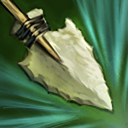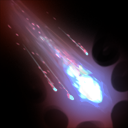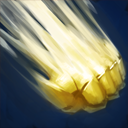Introduction
So first off, why should you trilane? Trilaning is a skill that many professional teams employ. It's called "tri" laning because you send both support heroes to a lane to assist the carry in that lane. In this guide, we'll be discussing both offensive and defensive trilanes.
In a defensive or safe lane trilane, the main goal is to ensure you carry gets virtual free-farm. This allows your carry to quickly and safely accrue their necessary items.
Conversely, when running an aggressive or hard lane trilane, the primary objective is to prevent the opposing carry from getting free farm. This is usually done if your main carry is farming one of your two solo lanes.
So, without further ado, let's take a more in depth look into trilaning.
Defensive Trilanes
A defensive trilane consists of one hard carry with two supports helping him out. Preferably, these supports are good at harassing and disabling the enemy. This discourages the enemy offlaner(s) from moving in to deny creeps or harrass your carry. Defensive trilanes work best if you know the enemy team will only have one offlaner to deal with. This is because the supports will only have to worry about locking down and harassing one opponent. In the next few sections, I'll talk about good defensive trilane carries and supports and what roles they will be expected to fulfill.
The Roles of Supports in Defensive Trilanes
Contrary to what some may think, supports in trilanes have to be extremely active in order to fulfil their roles well. The main objective of a defensive trilane is to ensure the carry gets tons and tons of farm. In order to do this, the supports must be constantly doing the following things:
HARASSING
This role should be pretty self explanatory. In most cases, the defensive trilane will be facing off against one offlane hero. As a result, that hero should not be able to even think about coming up to the creep wave to last hit or deny. Most offlaners have to use long range nukes like  Powershot to farm and can only stand just inside experience range or they risk getting jumped on by three heroes. Every chance you get, you should be putting damage on the enemy offlaner to ensure they get as little experience and farm as possible.
Powershot to farm and can only stand just inside experience range or they risk getting jumped on by three heroes. Every chance you get, you should be putting damage on the enemy offlaner to ensure they get as little experience and farm as possible.
STUN STACKING
This is among the most important skills in all of DotA, not just defensive trilanes. This is basically just maximising the amount of stun you have in your lane. Basically, you'll want to use one stun first, and then use the other stun just as the first stun's duration is about to end. For example, let's say we have a  Vengeful Spirit and
Vengeful Spirit and  Sven in the same lane.
Sven in the same lane.  Magic Missile has a 1.45 second duration at level one while
Magic Missile has a 1.45 second duration at level one while  Storm Hammer has a two second duration at all levels. If both heroes cast their stuns at the same time, the enemy hero will be stunned for a total of two seconds. However, if
Storm Hammer has a two second duration at all levels. If both heroes cast their stuns at the same time, the enemy hero will be stunned for a total of two seconds. However, if  Sven stuns first and
Sven stuns first and  Vengeful Spirit waits to cast hers until the two second duration is over, then they can stun the hero for a total of 3.45 seconds rather than just two. This is integral in ensuring early kills in lane.
Vengeful Spirit waits to cast hers until the two second duration is over, then they can stun the hero for a total of 3.45 seconds rather than just two. This is integral in ensuring early kills in lane.
STACKING AND PULLING
This is another set of skills that is vitally important in defensive trilanes. Pulling is the art of denying an entire creep wave's worth of experience and gold to the enemy team. It also allows the supports to get some experience and gold without compromising the carry's farm. This is done by "pulling" the neutral creep camp into the lane. Since the creeps will aggro onto the neutral creeps, the creepwave will fight them instead of moving forward to the opposing creep wave. In order to ensure that the entire creep wave dies however, one must first stack the neutral camp. This is done by making the neutral camp aggro onto your hero at about the 52 or 53 second mark of each minute. Every minute, the game checks to see if there are any objects in the creep camp. If there are, the next camp won't spawn. If not, the camp will spawn. Since the neutral creeps will chase for about 8 seconds, this causes the system to respawn the camp despite the previous camp still being alive. Then, at about the :13 and :43 second mark of every minute, you can pull this double camp into lane and the camp will kill all of your creeps. Since the neutrals will also be damaged, if the supports can last hit the neutrals, it's some easy gold in their pockets!
WHEN TO PULL
As important as it is to know how to pull, it is just as important to know when to pull. It is much harder for a carry to get last hits if the tower and creep wave are damaging enemy units. And, as stated, the entire point of the trilane is to make your carry's life as easy as possible. So, the camp should only be pulled if the creep wave has pushed too far from your tower, otherwise your carry will have to compete with the tower for last hits.
ROAMING
At some point, your carry should have enough items and survivability to take care of themselves. When this time comes, one or both supports may want to start roaming around the map, looking to help the other lanes get kills. Typically this is the mid lane, since it is the closest, but elaborate ganks can be done on the top lane to try and kill the enemy carry.
The Roles of Carries in Defensive Trilanes
The role of the safe lane carry is pretty straightforward: FARM!! Seriously, about all you have to do is amass as much gold as possible as quickly as possible. However, there are a few things you can do to make this process easier both for you and your supports.
DENYING
"Deny creeps? But I'm the carry!" Great carry players will be able to keep their creep wave in a favorable position without their supports needing to pull for them. This is done by denying the friendly creeps. If you notice your lane has started to push a bit, simply start attacking your creeps once they hit half health to pull the wave back towards your tower. Easy as that. And it gives your supports one less thing to worry about, meaning they can protect you better. So it's a win-win.
JOIN THE FIGHTS
If your two supports think the three of you can get a kill on the offlaner, you should be there helping them. First off, good supports will give you the last hits on kills so you can get even more gold. Even if you don't get the last hit, you can still get assist gold. Even if you don't get the kill, the offlaner will probably have to leave the lane to heal, meaning you can get back to free farming in peace.
LAST HIT
Seriously. There is absolutely no excuse to be missing last hits in a defensive trilane unless the other team is running an aggressive trilane. Killing each creep gives roughly 50 gold. There are 4 creeps in a wave. Waves spawn 2 times every minute. This means that every minute, you should be farming 400 gold no sweat. In addition, you get one gold every 0.6 seconds. This is 100 gold per minute. So just by getting last hits and staying alive, you should be getting 500 GPM. It's that easy.
Aggressive Trilanes
If you choose to run an aggressive trilane, be warned. This lane will probably make or break the game. A successful aggressive trilane will cripple the opponents carry and give your team the advantage. On the other hand, failing to interrupt the carry will result in your team having three under farmed and under leveled heroes. This is a bad recipe for winning. Aggressive trilanes should only be run if you have a huge late game disadvantage (for instance, the other team has  Anti-Mage and your hardest carry is
Anti-Mage and your hardest carry is  Viper) and your heroes are not the best early-mid game pushers. Basically, you will want to take away as much experience and gold from the enemy carry as possible by denying and harassing very aggressively. Notice, this is an "aggressive" trilane, not a "reckless" trilane. So don't try to force kills. Let your opponents make the mistakes.
Viper) and your heroes are not the best early-mid game pushers. Basically, you will want to take away as much experience and gold from the enemy carry as possible by denying and harassing very aggressively. Notice, this is an "aggressive" trilane, not a "reckless" trilane. So don't try to force kills. Let your opponents make the mistakes.
The Roles in Aggressive Trilanes
When playing trilane versus trilane, it's not so different from playing in a 2v2 lane. Basically, you want to do your best to deny the enemy experience and harass them at the same time. Since they are in the safe lane, they will typically have the advantage since they have access to pulls whereas you do not (unless you're Radiant, where you can actually pull the large camp by the lane, but this will take a lot of practice).
Since the lane plays out much like the standard 2v2 lanes seen in most pub matches, I'll only leave you with a few things to remember:
DON'T DIE
Honestly, this is the best thing you can do to make sure your trilane succeeds. If you're there with three heroes, this pretty much means the two enemy supports will have to sit there with the carry and can't do anything else without risking his life. This means that warding, pulling, and roaming all become more dangerous. Basically, by taking a very aggressive stance, you force the enemy team to play more passively. However, if you die, you're giving the lane free experience and gold, the very thing you're trying to prevent. If you do die once or twice, it's best to just abandon the lane. Honestly, it's better to get out and try to push a different lane rather than continue feeding the carry.
DON'T PUSH
While pushing may seem like a good way to break a defensive trilane, it isn't. Good teams will just pull the lane all the way back to the tier two tower and farm there. And there, it is much more dangerous to contest farm. So unless you can take both the tier one and tier two quickly, don't push the towers.
CONTEST PULLS
Contesting pulls is a great way to win an aggressive trilane. Just being in the vicinity of a dying neutral creep will give you some experience. Stopping pulls altogether will ensure that your team can keep the equilibrium at least a little closer to your tower. One way to stop pulls is to put a  Sentry Ward in the pull camp. This will cause the system to register an object there and cause the camp not to spawn. It also causes the enemy team to have to buy wards of their own to get rid of yours. Another option is to stand in the pull spot, a dangerous but effective move. Also, you can stun the creeps in the camp, causing the pull to fail since the creeps will still be in the camp when the minute is up.
Sentry Ward in the pull camp. This will cause the system to register an object there and cause the camp not to spawn. It also causes the enemy team to have to buy wards of their own to get rid of yours. Another option is to stand in the pull spot, a dangerous but effective move. Also, you can stun the creeps in the camp, causing the pull to fail since the creeps will still be in the camp when the minute is up.
Conclusion
Well there it is, my in depth guide to trilaning. I've tried to outline the principles that can make or break a trilane. So if you guys see something missing or that can be improved, just let me know. As always, the most important part of playing DotA is to have fun. But winning is always more fun ;)



















Quick Comment () View Comments
You need to log in before commenting.